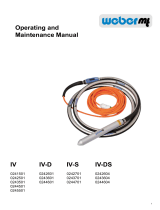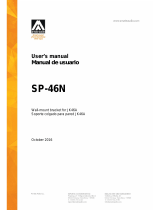
Table of Contents
5000203044IVZ.fm 3
1 Preface ....................................................................................................................................4
2 Introduction ............................................................................................................................5
2.1 Means of representation for this operator's manual .................................................................... 5
2.2 Wacker Neuson representative................................................................................................... 5
2.3 Described machine types ............................................................................................................ 5
2.4 Identification of the machine........................................................................................................ 6
3 Security ..................................................................................................................................7
3.1 Policy........................................................................................................................................... 7
3.2 Areas of responsibility of the operator......................................................................................... 7
3.3 Operator responsibilities.............................................................................................................. 7
3.4 Personnel qualification................................................................................................................. 8
3.5 Residual dangers......................................................................................................................... 8
3.6 General safety instructions.......................................................................................................... 8
3.7 Electrical safety............................................................................................................................ 9
3.8 Specific safety instructions – Internal vibrators............................................................................ 9
3.9 Maintenance.............................................................................................................................. 10
3.10 Personal Protective Equipment ................................................................................................. 10
3.11 Behavior in dangerous situations............................................................................................... 11
4 General safety instructions for power tools .....................................................................12
5 Setup and function ..............................................................................................................14
5.1 Scope of delivery....................................................................................................................... 14
5.2 Application................................................................................................................................. 14
5.3 Functionality............................................................................................................................... 14
6 Components and operator's controls ................................................................................15
7 Transport ..............................................................................................................................16
8 Use and operation ...............................................................................................................17
8.1 Prior to starting the machine...................................................................................................... 17
8.2 Starting up ................................................................................................................................. 17
8.3 Decommissioning ...................................................................................................................... 20
8.4 Cleaning .................................................................................................................................... 20
9 Maintenance .........................................................................................................................21
9.1 Qualifications for maintenance work.......................................................................................... 21
9.2 Maintenance schedule............................................................................................................... 21
9.3 Maintenance work...................................................................................................................... 22
10 Troubleshooting ..................................................................................................................23
11 Disposal ................................................................................................................................24
11.1 Disposal of old electrical and electronic equipment................................................................... 24
12 Technical data ......................................................................................................................25
12.1 IREN30...................................................................................................................................... 25
12.2 IREN38...................................................................................................................................... 26
12.3 IREN45...................................................................................................................................... 28
12.4 IREN58...................................................................................................................................... 30
12.5 IREN65...................................................................................................................................... 32
12.6 Extension cable ......................................................................................................................... 34
EC declaration of conformity .....................................................................................36
DIN EN ISO 9001 certificate . . . . . . . . . . . . . . . . . . . . . . . . . . . . . . . . . . . . . . . . . .31
Inhalt
























